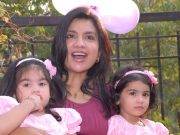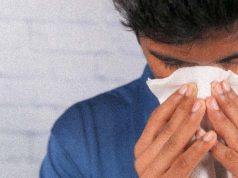Breast cancer is one of the oldest cancers known to man. The incidence of breast cancer in India is on the rise and is rapidly becoming the number one cancer in women, surpassing cervical cancer. Indian Council of Medical Research data shows that breast cancer is the commonest cancer to affect Indian women in metropolitan cities.
However many cases in rural areas go undiagnosed due to poor education and lack of access to healthcare. It is estimated that one in 22 women in India is likely to suffer from breast cancer during her lifetime, while the figure is definitely more in America with one in eight being a victim of this deadly cancer.
CAUSES
The chance of having breast cancer increases with age; the risk increasing sharply after 50-60 years. However, younger women with breast lumps are at a far greater risk for breast cancer in comparison to those without lumps in the same age group, and to older women. A number of environmental factors and genetic alterations are responsible for the development of breast cancer.
BRCA1 and BRCA2 are the two main genes implicated in breast and ovarian cancer. Women with breast cancer in their mother or sisters are at a higher risk and the family history merits careful evaluation to assess risk. Breast cancer can be inherited from a female or a male relative who may have had the disease or who acts as a carrier of the mutant gene(s). Breast cancer occurs more frequently in developed countries of the world.
Breast cancer is supposed to be more common among unmarried women; those who are married, but have not had children; and those who have had children, but did not breast feed their babies. Literature does show correlation of smoking, alcohol drinking and high fat intake to the causation of breast cancer and this probably explains its relationship to a modern lifestyle and environment. This probably also explains the increased incidence of breast cancer among women residing in metropolitan cities of India, where a Western lifestyle seems to be taking hold.
Breast cancer can affect both men and women though it is 100 times more common in women than in men. The treatment and outcomes are similar in both. All breast lumps need to be taken seriously as most cancers manifest as painless lumps. Sometimes the cancer may cause nipple discharge or lumps in the armpit. Increasingly, cancers being are detected on mammography when they are too small to be felt. A pink ribbon denotes the struggle of the sufferers when fighting the cancer. In 1996 the pink and blue ribbon was designed to create awareness of the fact that “Men Get Breast Cancer Too!”

CLINICAL MANAGEMENT
For the sake of treatment, breast cancer is broadly divided into three stages: early breast cancer, locally advanced and late or metastatic disease. The distinction is based on the size of the lump, involvement of skin of the breast and lymph nodes in the armpit and presence of cancer elsewhere e.g. in bones, liver lung or brain.
In India, few patients are detected with early breast cancer, most being locally advanced by the time they seek healthcare. Illiteracy, poverty ignorance and lack of health education are considered responsible for this delay.
DETECTION AND DIAGNOSIS
It has been clearly shown that the size of tumour at the time of starting treatment is directly related to the ultimate result. Ninety percent of patients with tumour size less than 1 cm will survive 20 years. Survival is reduced to 50% with tumour size more than 3 cm. This demonstrates the significance of early detection.
Cancer can be detected in the stage when the lump cannot be felt by regular screening. Current protocols recommend, self-examination of breasts by women, clinical examination by a specialist surgeon and mammography starting at 40 years of age. Self-examination of breasts has to be learnt so that it can be practised properly. Regular mammography coupled with clinical examination by a trained surgeon may decrease deaths from breast cancer by almost 30 per cent.
Mammography can detect lumps down to 5 mm. Such lumps may not be felt from the surface. All lumps whether felt or not require confirmation of diagnosis with some form of biopsy. The tissue from the lump is examined on a slide by a pathologist. A breast cancer patient has to be thoroughly investigated to rule out spread of disease to other parts of the body and her suitability for operation, chemotherapy and radiotherapy.
WHAT WOMEN SHOULD DO
- Be familiar with the normal feel of the breasts. Seek medical attention if any abnormality is felt.
- From the age of 30 to 39 years, undergo clinical breast examination by a surgeon every two years
- Those between 40 and 49 years, 50 and 75 years, must undergo such examination every year and mammogram every two years
- Along with regular clinical breast examination by specialists, early pregnancy and prolonged lactation are important.
- Eat healthy: Limit alcohol consumption to 1 drink a day and exercise at least 30 to 40 minutes every day. Control weight and consume adequate calcium and Vitamin D.
- Avoid excessive sweet and meat diet.
WARNING SIGNS OF CANCER
- Unusual bleeding/discharge
- Blood in urine or stool
- Discharge from any parts of your body, for example nipples, penis, etc.
- A sore which does not heal
- Sores that: don’t seem to be getting better over time, are getting bigger, getting more painful, are starting to bleed
- Change in bowel or bladder habits
- Changes in the colour, consistency, size, or shape of stools (diarrhoea, constipated)
- Blood present in urine or stool
- Lump in breast or other part of the body
- Any lump found in the breast when doing a self examination. Any lump in the scrotum when doing a self exam. Other lumps found on the body.
- Nagging cough
- Change in voice/hoarseness
- Cough that does not go away
- Sputum with blood
- Obvious change in moles
- Difficulty in swallowing or feeling of pressure in throat or chest which makes swallowing uncomfortable
- Feeling full without food or with a small amount of food
USE ABCD RULE
Asymmetry: Does the mole look the same in all parts or are there differences?
Border: Are the borders sharp or ragged?
Colour: What are the colours seen in the mole?
Diameter: Is the mole bigger than a pencil eraser (6 mm)?
MULTIMODAL THERAPY
It has now been conclusively proved that breast cancer patients not only require operation but also need additional (adjuvant) treatment, including chemotherapy, radiotherapy, hormone therapy and immunotherapy. A right combination of different modalities of treatment with proper planning and sequencing is important to get the maximum benefit to the patient. This depends upon various factors that must be taken into account jointly by various specialists at a cancer centre.
Complete removal of the breast (mastectomy) is not always required; the tumour can be excised along with a rim of normal breast tissue. It is possible to preserve the nipple and maintain the shape of the breast to quite an extent; thus providing a reasonably good cosmetic result. The ultimate outcome or result is as good as total removal of the breast.
However breast conservation surgery is practised in specialized centres only. Pathology examination of the removed tumour and a mass of lymph nodes from the armpit (removed at the same surgery) provide accurate staging information on which further treatment is planned.
Surgery is invariably followed by chemotherapy which involves injection of anti-cancer medication (chemotherapy), usually once in 3-4 weeks. A course of 6 ‘cycles’ takes 4-5 months and may be administered under detailed directives from the specialist even at remote hospitals under care of a general physician. Radiotherapy of the breast is mandatory if the breast has been conserved and may also be needed if the entire breast has been removed. This may be followed by endocrine therapy (daily tablets) or other forms of injected medication individualized to the patient.
Sometimes, if the tumour is large, 2-3 cycles of chemotherapy precede surgery. For patients in whom the disease is known to have spread to other organs, surgery may be deferred till the end of chemotherapy.
The continued follow-up of the patient with the treating surgeon is very important not only for the rehabilitation of the patient, but also for detecting the recurrence or distant spread. The recurrence of cancer of the breast can be effectively kept under control if it is detected early and proper treatment instituted in time.



















